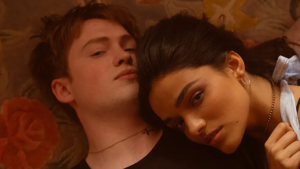This Week’s Spotlight: Spotlight
Spotlight is a modern day All The President’s Men, which is a very good thing, because All The President’s Men is a spectacular movie, and Spotlight fills the shoes of its ancestor so well, it’s almost like watching a remake with a completely different story.
In Spotlight, the story revolves around the scandal of the sexual assault cover-ups within the Catholic Church, but primarily the investigation into the proceedings of Cardinal Law, who was acting as the Cardinal of Boston, and his involvement in the cover-ups. But it doesn’t begin that way. When the movie begins, set in 2000, we are only made aware of the cover-ups through a scene showing us one happening, lacking important context, and ultimately raising questions within the viewer’s mind.
The important thing about Spotlight’s story is that the audience discovers things with the characters. Specifics of the investigation being uncovered are the main force of the movie, and if you are not knowledgeable about the details of the story, these moments come as a hard hitting and shocking surprise. It’s almost the kind of movie you specifically avoid spoiling, but it happened in real life, so the information is freely available.
This movie has an amazing ability to characterize the times. Like All The President’s Men, which had the Bobby Fischer chess matches playing in the background of a scene, Large billboards advertising AOL and flip phones as well as the fallout of 9/11 play large parts in putting you in early 2000’s Boston.
The actors are amazing in this film, and there isn’t a single one that hones in a performance, but the specific nuance of film is that it is a visual art, and this movie excels at conveying through implications. A powerful scene is towards the end of the movie, where Mark Ruffalo’s Michael Rezendes, an intrepid reporter, and Stanley Tucci’s Mitchell Garabedian, a sour-faced lawyer, talk about the completed story. Garabedian looks it over and doesn’t acknowledge it, and Mike’s dissatisfaction with his reaction (as well as the audience’s) shows through. He then leaves and looks through a window into a waiting room and sees three children playing. Garabedian walks up and tells him to keep up with what he’s doing and walks in, dropping his characteristic cynicism to ask the kids how their day was.
The implication of the scene is clear from the moment Mark Ruffalo’s face falls upon seeing the children, and although Tucci’s character specifies their identity as victims, you understand what has happened, and why Garabedian can’t be happy with one single victory amongst the ongoing fight. A similar moment plays out, when a large crack in the case is found, a taxi containing Ruffalo and the evidence drives by a previously interviewed victim at a playground with his son. This movie’s most powerful moments are when they use the visual medium to tell you a story that has deeper implications than what is being seen.
This movie is a must-watch, if only to see the dying gasps of the ‘newspaper investigating a story’ films. It’s odd to see the people in the movie insist that they need to do this because they have a responsibility to tell the truth to people. In our current world with thousands of news sources and print quickly becoming the unpopular way to get news this movie makes a case for print, and does so in a way that deserves its academy nods.








